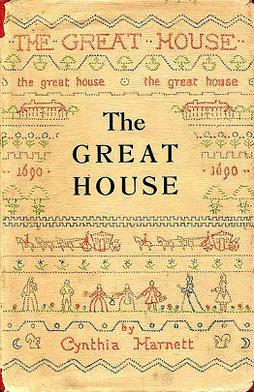The Great House (novel) facts for kids
The Great House is an exciting children's historical novel written by Cynthia Harnett. It was first published in 1949 and includes wonderful drawings by the author herself.
This book takes you back in time to the year 1690. It tells the story of a brand-new, fancy house being built. This new house is very different from an older, more traditional manor house nearby. The older house still shows signs of its medieval past. The way these two houses look and are built helps show the big changes happening in society during that time.
Contents
The Great House Novel
The Great House is a special kind of book called a historical novel. This means the story is made up, but it happens in a real time period from the past. The author, Cynthia Harnett, did a lot of research to make sure the details about 1690 were correct. This helps readers feel like they are truly living in that time.
What is This Book About?
The main idea of The Great House is to show how things were changing in England during the late 1600s. People were starting to build houses in new ways, moving away from older styles. These changes in how houses were designed also reflected new ideas about how people lived and what was important to them.
Setting the Scene: England in 1690
Imagine England over 300 years ago! The year 1690 was part of a time called the Early Modern period. This was a time of big changes in many areas, including how people built their homes. New ideas about comfort, style, and showing off wealth started to become popular.
Old vs. New Houses
In the book, you'll see two very different types of houses:
- The Old Manor House: This house represents the past. It would have features from medieval architecture, like thick walls, smaller windows, and perhaps a more enclosed layout. These homes were built for protection and often grew over many years.
- The New Grand House: This house is built in a "new style." This likely refers to Baroque architecture or early Palladian architecture, which were becoming popular. These styles focused on symmetry, large windows, grand entrances, and open, airy rooms. They were designed to be beautiful and impressive, showing off the owner's importance.
The story uses these two houses to help young readers understand how society was changing. It shows how people's tastes and priorities were shifting from older traditions to more modern ways of living and building.


